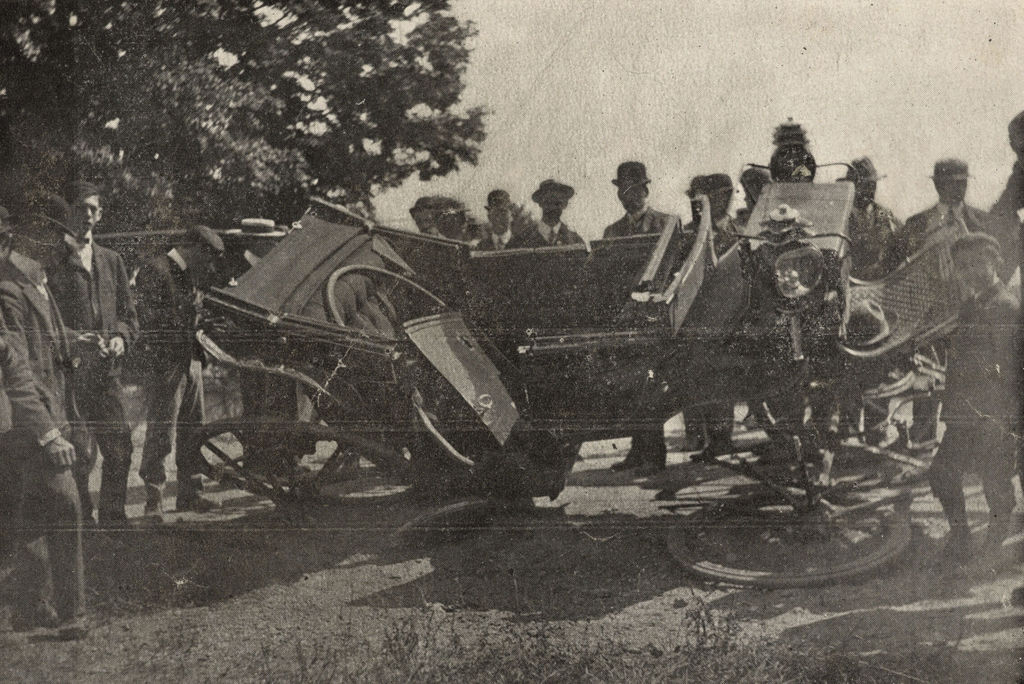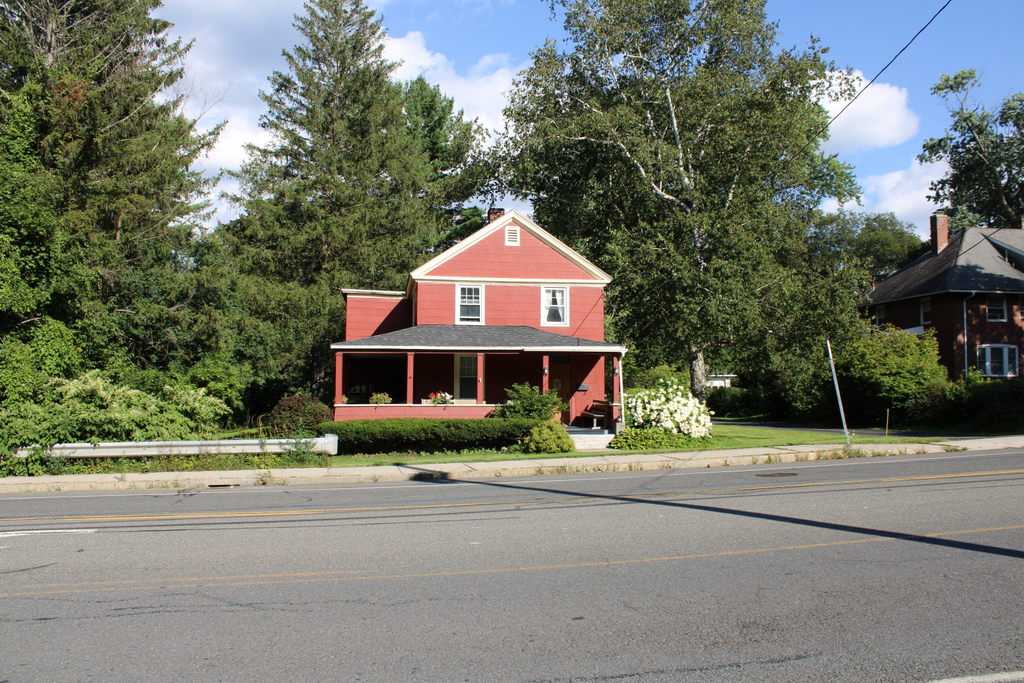The wrecked carriage that President Theodore Roosevelt had been riding in on South Street in Pittsfield on September 3, 1902. Image courtesy of the Harvard Library, Theodore Roosevelt Collection.
The scene in 2023:
As explained in more detail in an earlier post, this spot on South Street was the site of a collision between an electric trolley and a horse-drawn carriage that was carrying President Theodore Roosevelt on September 3, 1902. It occurred on a section of South Street just south of the culvert over Wampenum Brook, when both the carriage and the trolley were heading south toward Pittsfield Country Club. Just beyond the culvert, the roadway narrowed, requiring southbound vehicles to cross over the tracks to continue.
The trolley, which was car 29 of the Pittsfield Street Railway, was filled with passengers hoping to see the president at the country club. Its conductor was James T. Kelly, and it was operated by motorman Euclid Madden. In the carriage, aside from the president, was Governor Winthrop Murray Crane, Roosevelt’s aide George Cortelyou, Secret Service bodyguard William Craig, and driver David J. Pratt. The carriage itself was a landau, and had a team of four horses.
The exact speed of the trolley was later subject to much debate, with some claiming that the crew was being pressured to travel at an unsafe speed to overtake the president before he reached the country club. Either way, at around 9:45 a.m. the trolley struck the left front wheel of the carriage while the carriage was starting to cross the tracks. The impact threw both Craig and Pratt from the carriage, killing Craig instantly and severely injuring Pratt. The other three occupants sustained relatively minor injuries, although Roosevelt had a cut on his lower lip, bruising and swelling on his face, a black eye, and a bruised left shin.
In the aftermath, once Roosevelt discovered that Craig was dead, the president confronted the motorman, with the next day’s Boston Globe quoting him as saying:
This is the most damnable outrage I ever knew. If you lost control of your car, there is some excuse, but if you tried to pass us, disregarding all our warnings, you ought to be punished.
Other accounts add that Roosevelt shook his fist while saying this, and then questioned Madden about why he was operating the trolley in such a manner, to which Madden supposedly protested that he had the right of way.
Following this confrontation, the president and his party went to the home of Maroa Stevens, a 53-year-old widow who lived in the house directly across the street from the accident. This house was blocked from view in the top photo because of the wrecked carriage and the bystanders in the foreground, but it is still standing here, and it is shown in the center of the bottom photo. There, his surgeon treated his injuries, and he rested and recuperated in the house for about a half hour. During that time, a new carriage was obtained, and he then continued his journey toward Lenox and eventually back to his home on Long Island by the end of the day.
Today, the scene looks very different from its appearance in 1902, and there are no historical markers or other indication that the accident occurred here. The only readily-identifiable landmarks from contemporary accounts of the accident are the culvert over the Wampenum Brook, which is located on the far left side of the photo, and the Stevens house in the center of the photo.


